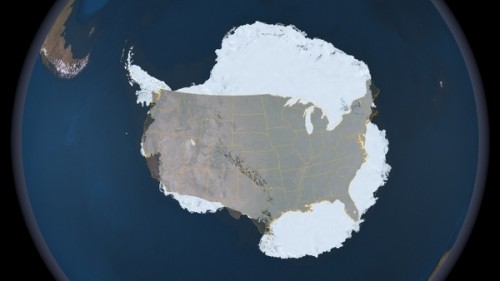I agree the earth is not overpopulated.
Humans are however over populated and having adverse reactions to the earth and each others sanity.
But by that logic when we as a species became so abundant that we could no longer settle on our own in the wilderness to escape the confines of a social structure is when the Human race became overly abundant.
Then again I long for the life of a livestock raising hermit living high in the hills without interference from you, Sadly all the nice hills have been occupied and have condo's on them.
Thread: The earth is not overpopulated
-
2013-03-04, 10:07 PM #241Scarab Lord


- Join Date
- Apr 2009
- Posts
- 4,206
-
2013-03-05, 12:56 AM #242
I highly doubt we will populate Antarctica. Also,7 billion humans is pretty much overpopulated. As long as the human population is friendly to natural environment, humans can populate more. But we all know humans are not friendly to natural environment, at least the majority is not.
I say start populating the Moon or Mars(<---that will not happen in my lifetime.),, Earth will not last forever.
-
2013-03-05, 04:31 AM #243Legendary!


- Join Date
- Apr 2008
- Posts
- 6,513
Did you willfully ignore the jist of the article being about a hypothetical situation of "how big a landmass footprint would the entire world's population take up if it was placed in an area at a specific population density"? or are you just being hystronic for nothing?
Yes, the point of the article was to illustrate that, if you put EVERYONE on earth into one "megacity" with a population density of Newyork city, it would all fit in the landmass of Texas. However, you can also extrapolate from that. You could EASILY balance that population over the entire developed surface of the planet earth and end up with a quite sustainable, very comfortable population density, without even coming remotely close to uberpacked urban sprawl.
Simple fact of the matter is, Humanity has a disturbing tendancy to cluster together in large urban sprawls, which are poorly designed for supporting themseves without a HUGE infrastructure devoted to bringing resources TO them.
-
2013-03-05, 04:38 AM #244Stood in the Fire


- Join Date
- Sep 2012
- Posts
- 482
Neither of those destinations will be habitable w/o an airlock habitat, or very brief ventures in an airtight suit, for many millenia at least - the moon almost certainly never will be. What makes that a more viable habitat than Antarctica? Some areas of the Antarctic, while remote, have seasons of mild weather that can be quite beautiful, and in the seasons when it's harsh...you're right back in an enclosed habitat. Only, an air leak in this case isn't potentially lethal.
-
2013-03-05, 04:56 AM #245Legendary!


- Join Date
- Apr 2008
- Posts
- 6,513
While true in some ways, this is wrong in a whole lot of other ways as well. It is true that dense "urban / city" areas take up less of an ecological footprint then a similar population density spread over a wider "rural" area, but at the same time, when an urban area becomes signifigantly large, the external infrastructure needed to support it becomes signifigantly more damaging then if that same area was devided more appropriately.
For example, if you could take New York City, divide it into equal city "chunks", and then also take the support / agriculture footprint needed to support New York City and also divide that into similar chunks, and then re-arrange them into 4 equal groupings of City + Support, you would have effectively more then quadrupled the efficiency with which New York's population uses it's support system, simply by means of shortening the distance between City and Support.
The main problem with Human urban development is that it generally starts at a central location, and simply, continuously, keeps expanding. The more it expands, the less effeciently it's support systems supply it. If it worked like say, an insect colony, where after a certain critical mass is reached, the colony effectively splits in two, with the new colony moving to a completely different location to establish itself, it would be WAY more efficient.
Unfortunately, with the way modern citys tend to end up looking, I fear men like Frederick Law Olmsted, one of the founding Fathers of American Landscape Archetecture (the kind that LIKES nature), would roll in their graves.Last edited by Surfd; 2013-03-05 at 05:02 AM.

 Recent Blue Posts
Recent Blue Posts
 Recent Forum Posts
Recent Forum Posts
 Currency Conversions Coming with Patch 4.4.0 on April 30
Currency Conversions Coming with Patch 4.4.0 on April 30 MMO-Champion
MMO-Champion


 Reply With Quote
Reply With Quote




